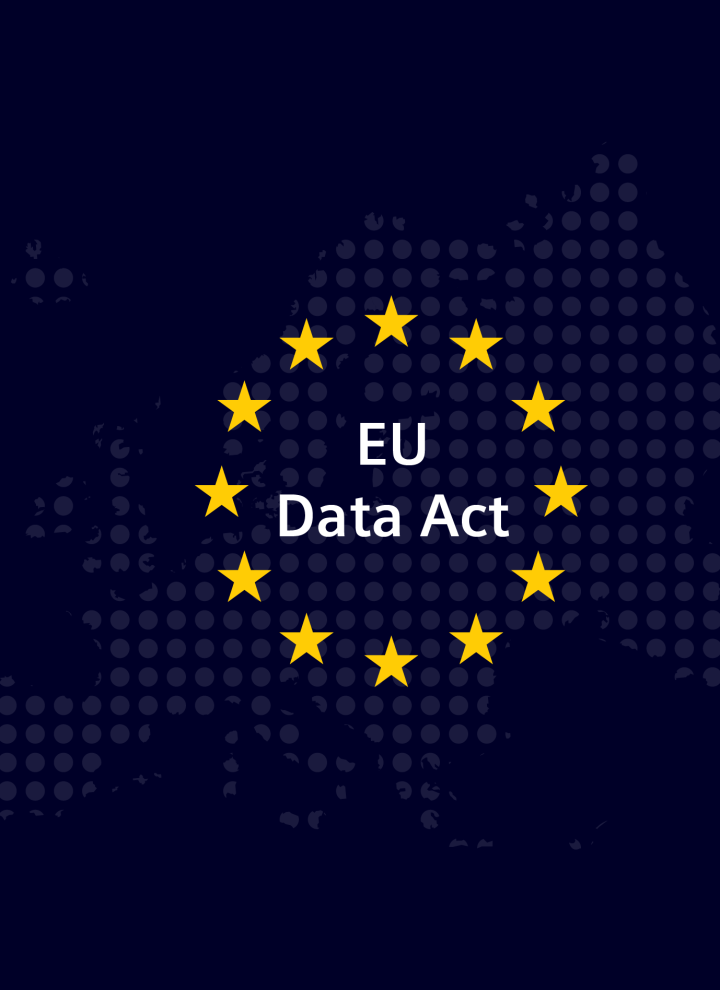Navigate the Impact of Tariffs on your Supply Chain

Navigate the Impact of Tariffs on your Supply Chain
Tariffs and global supply chains are more interconnected than ever. Organizations face heightened risks, rising costs, and operational complexity as trade tensions and regulatory shifts continue – especially following US-China tariffs and retaliatory measures.
How tariffs affect supply chains – and how to stay resilient
The impact of tariffs extends far beyond added import duties. They influence sourcing strategies, supplier relationships, production timelines, logistics networks, and customer pricing models.
To manage these dynamics effectively, Siemens Advanta’s Supply Chain Tariffs Analytics Solution helps organizations to:
- Model real-time scenarios to assess the impact of tariffs on logistics, costs, and supply continuity
- Analyze root causes at part level to identify vulnerabilities and evaluate dual sourcing opportunities
- Shift perspectives between revenue and spend to better engage customers and suppliers with actionable insights
From disruption to strategy: leveraging supply chain shifts as opportunity
Tariff-related disruptions are no longer isolated events – they’ve become a recurring feature of global trade. To remain competitive, organizations must respond quickly and strategically to changing trade policies and supply chain impacts. This requires a shift from reactive mitigation to active opportunity management.
Turning disruption into advantage means understanding where volatility can open doors: for example, by optimizing production footprints, securing more flexible sourcing models, or rethinking logistics strategies with a long-term view.
How Siemens Advanta helps you build resilience and agility
To support organizations in navigating these challenges, Siemens Advanta provides tailored solutions across multiple dimensions of supply chain strategy. Siemens Advanta supports your organization through:
- Supply chain optimization: improve efficiency by up to 30% and reduce lead times by 40% through nearshoring, real-time tracking, and automation.
- Market diversification: leverage tariff engineering and supplier shifts to reduce expenses by 10–25%.
- Innovation and cost reduction: boost productivity by up to 50% and lower compliance costs with AI-powered analytics.
- Strategic partnerships: recover up to 99% of duties paid via duty drawback programs and free trade zones.
Strategic tariff mitigation: more than cost savings
Mitigating the effects of tariffs isn't just about protecting margins—it's about building long-term resilience. Siemens Advanta’s approach combines technology, analytics, and industry expertise to:
- Identify cost-saving alternatives
- Collaborate with key suppliers using proprietary cost insights
- Support make-buy decisions and product redesign evaluations
Stay ahead of tariff impacts on your supply chain
In a volatile global trade environment, proactive planning is critical. Siemens Advanta’s innovative solution enables businesses to mitigate risks, enhance supply chain resilience, and drive sustainable growth.
Contact us today to learn how we can help you adapt to supply chain tariffs and thrive in the face of uncertainty.
Industry Experts


Plant Maturity Assessment

Factory Maturity Assessment to increase your operational performance
Enroll in a comprehensive factory maturity assessment by filling out our form. This assessment covers key areas such as manufacturing execution & process automation, supply chain, people & culture, and cybersecurity & operations. Gain transparency on your digitalization potentials and receive a tailored roadmap to enhance your performance.
Start your journey towards operational excellence today!
Our industry leader

Cyber Resilience Act | Whitepaper

Cyber Resilience Act
Strengthen Your Cyber Defenses with the Cyber Resilience Act
At Siemens Advanta, we are dedicated to empowering your organization to navigate the complexities of the Cyber Resilience Act (CRA) with confidence. Our expertise in integrating cybersecurity measures ensures that you are well-equipped to protect your digital landscape.
Integrating risk management with advanced cybersecurity measures
The Cyber Resilience Act is a groundbreaking initiative that underscores the importance of cybersecurity and compliance in today’s interconnected world. It closely aligns with established frameworks such as GDPR and NIS2, providing a robust structure for digital product protection.
Our whitepaper provides a deep dive into the essential components of the CRA, highlighting the importance of integrating risk management and risk handling practices within your organization. As compliance becomes a top priority, learn how our specialized risk management services can protect your digital assets.
At Siemens Advanta, we focus on enhancing your cybersecurity and data protection efforts by guiding you towards compliance with the Cyber Resilience Act. By implementing effective risk management and network security measures, we ensure that your products and practices meet the new standards while strengthening your overall cyber resilience strategy. Embrace this opportunity to protect against threats and vulnerabilities and secure your future with our expert risk management services.
For more information, read our whitepaper on the Cyber Resilience Act.
Our industry leader

Driving Next-Gen Servitization Models for the Energy Sector

Driving Next-Gen Servitization Models for the Energy Sector
Servitization for Energy Sector
A Pathway to Sustainable Growth, 2024
Scovan Engineering Inc. provides Engineering, Procurement, and Construction (EPC) and Product-as-a-Service (PaaS) solutions for oil and gas producers.
Partnering with Siemens Advanta allowed us to tap into an incredible opportunity to redefine what servitization means for the energy sector. By combining our expertise in engineering with Siemens’ digital and strategic capabilities, we’ve unlocked new possibilities for our clients and the broader market. Our collaborative output demonstrates the power of our unique strengths.
Small to mid-sized oil and gas producers face cost pressures, operational inefficiencies, and increasing ESG requirements, demanding innovative, service-based solutions.
- Fluctuating commodity prices and the need for capital efficiency are requiring leaner operational models.Servitization reduces operational risks while minimizing upfront capital expenditures, allowing operators to focus on continuous improvement and value generation through service contracts.
- The adoption of Industrial Internet of Things (IoT), Artificial Intelligence (AI), and big data analytics is revolutionizing operational efficiency.Companies that leverage the technology to reduce downtime, enhance maintenance strategies, and manage operational data will be positioned to lead the industry forward.
- Global pressure to reduce carbon emissions is pushing energy operators to integrate cleaner energy technologies and meet strict regulatory requirements.Real-time emissions tracking, carbon footprint management, and transparent sustainability reporting are becoming mandatory for survival.
Siemens Advanta and Scovan explored multiple servitization models and evaluated capital impacts for Oil & Gas companies
- Product-as-a-Service (PaaS): Instead of traditional equipment sales, service contracts that include predictive maintenance, digital monitoring, and performance guarantees shift costs from capital expenditures to operational expenditures. This model provides operators with predictable cash flows while maintaining asset reliability.
- Lifecycle Asset Management: Leveraging digital twins and predictive analytics, companies can manage the complete lifecycle of assets, from design and commissioning to decommissioning. This reduces the total cost of ownership and maximizes uptime and environmental performance.
- Outcome-Based Services: Operators and service providers can agree on specific performance metrics, such as emissions reductions or minimized downtime. This shifts the focus from equipment delivery to achieving measurable operational outcomes.
Servitization platforms deliver reduced downtime and operational costs, improved ESG compliance, and scalable models tailored for diverse operator needs, enabling cost-effective growth.
- Siemens’ predictive maintenance platform and Scovan’s PadX improve asset performance and extend equipment lifecycles by reducing downtime through real-time data insights. A midstream operator implementing predictive maintenance achieved a 20% reduction in unplanned downtime, saving millions YoY.
- Scovan’s HipVap and Siemens’ Insights Hub platforms provide real-time emissions tracking and sustainability management. This enables operators to meet regulatory demands while improving energy efficiency and reducing costs in parallel.
- Our connected equipment capability streamlined data management, compliance reporting, and decision-making processes. This enabled real time asset utilization monitoring, schedule updates, and automated reporting.
Our work with Siemens Advanta has been a game-changer. Together, we’ve developed innovative, service-based solutions that align with the evolving needs of our customers. It’s partnerships like this that show how much we can accomplish when vision and capability come together. We’re proud of what we’ve achieved and excited for what’s ahead.

Cyber Resilience Act

Cyber Resilience Act
Product Cybersecurity Revolution – “Security by Design”
Siemens Advanta helps its clients comply with the Cyber Resilience Act by integrating Secure-by-Design principle into product development.
Siemens Advanta makes sure clients are successful in acquiring “CE Marking” and comply with the Cyber Resilience Act by integrating Secure-by-Design principles, tailoring security measures based on product criticality, and conducting risk assessments at every development stage. Siemens Advanta's proactive approach strengthens compliance and boosts its client's customer trust and market competitiveness with its secure and reliable products.
- Cyber risk assessment to identify critical risk areas and provide mitigation action items
- Product Security Program setup with appropriate levels of governance and risk-based security controls
- Proposal for post market surveillance process and team
- Provision of an outside view and cornerstone for optimization of building a secure product
- Proven approaches to develop and implement Product Security, ensuring cross-border transparency and compliance – with up to 30% less time and effort
- Reusable blueprints and trainings for further scaling within an organization
- Identify critical products containing digital elements
- Identify key stakeholders from senior management, business representatives, IT organization, manufacturing operations, and human resources
Our industry leader

Mergers & Acquisitions (services)

Mergers and Acquisitions
M&A can transform your business, but it requires expertise throughout the process, starting in the pre-deal phase, continuing in the transaction phase, and through post-merger integration (PMI). M&A activities are often driven by a desire to increase market share, expand product lines, or gain access to new markets. Successful M&A transactions require careful planning, due diligence, and effective execution to achieve desired outcomes and create value for stakeholders - something we have proven time and again at Siemens Advanta.
- Identify the appropriate M&A prospect
- Evaluate the advantages and disadvantages of a possible acquisition
- Develop the integration plan, discover potential synergies, and guarantee preparedness from Day 1
- Achieve faster growth
- Facilitate the transfer of technology
- Accomplish diversification
- Attain positive synergy
- Increase market power
Our industry leader

Compliance with EU Data Act

Compliance with EU Data Act
EU Data Act: Prepare for New Regulations
To foster the data economy in the European Union, EU legislators are currently reshaping business ground with new laws that shall enable fair and simple access to and use of data. The latest legislation: the EU Data Act, will become effective in September 2025.
With this deadline on the horizon, manufacturers of connected devices and others are required to act now. The timeline is tight, the obligations and requirements are ambiguous and fundamental business questions need to be clarified.
What is EU Data Act?
One important aspect of the EU Data Act is to grant users of connected products the right to access the generated machine data. In addition, the Data Act allows users to grant access to that data to third parties, which may be, for instance, independent service providers, AI startups and potentially also competitors.
Users and third parties may use the data for their own purposes, including providing third party service (as an alternative to manufacturer provided services) or analytics offers.
Manufacturers that fail to provide data access risk facing substantial financial penalties. The penalties shall be effective, proportionate and dissuasive and may have retroactive effect; if personal data is concerned, fines shall be according to the GDPR, which means the higher of EUR 20 million or 4% of the annual global revenue.
What is required and when?
Beside other obligations, manufacturers of connected products need to fulfill three key obligations by two deadlines.
- Information obligation
Starting from September 2025, manufacturers of connected products are required to inform users at point of sales about the data that the connected product generates during usage.
- Data sharing obligation
Starting from September 2025, the data holder (usually the manufacturer, if it chooses to collect the machine data) is required to share available data with the user of the connected product as well as with third parties authorized by the user.
- Design obligation
One year later, starting from September 2026, manufacturers must design new products in a way that the data is directly accessible to the user.
What do these obligations imply? Companies that sell connected products need to react now and start designing and implementing response strategies for sharing the relevant data. Yet, as is often the case, the details are where the real challenges lie.
Who does the law apply to?
The above-mentioned obligations under the EU Data Act apply to all manufacturers of connected products that make their products available in the EU, irrespective of their industry and place of establishment.
The right to access data is restricted to users within the EU. Third parties that were granted access by users must have a legal representation in the EU to be eligible for data access.
How can you become compliant?
The path to compliance is individual for each company, yet there are four key tips, from our experience, to make the journey a smoother one.
- Setting up a cross-functional team
Due to the complexity of this topic, different functions and experts from within the clients’ organization and from external need to be mobilized, including legal, government affairs, R&D, product management and IT. It is advised to involve all experts and concerned business units from day 1 to form a joint response strategy moving forward.
- 80/20 and risk-based approach
The Data Act applies not only to new products, but also to the existing installed base in many cases. Companies with a large variety of product families need to carefully plan their approach to balance the need of being compliant and the effort to implement.
- Close collaboration between legal and technology experts
Companies usually need to develop a new technical solution to fulfill the obligations under the Data Act. It is neither a pure technical nor an entire legal decision. Technical feasibility/effort and legal compliance risks need to be evaluated jointly to come up with an optimal solution. In addition, sales and customer service teams need to be involved as well to ensure a smooth customer experience.
- Treat this as a business opportunity rather than a pure compliance burden
Despite being a compliance topic from the first glance, the EU Data Act also provides vast opportunities for companies to capture. Creating new revenue streams of providing data, offering third party maintenance services for other companies’ products, or conducting AI analytics on competitors’ machine data, the opportunities seem endless.
How can Siemens Advanta help?
With our footprint in various industries and specifically our experience with the EU Data Act, we can support our clients on their way to become compliant with the obligations. Our project management services span from hands-on project management office support for urgent content issues, to developing comprehensive data strategies designed to meet future digital challenges. Siemens Advanta tailors its offerings and strategies to align with the unique needs and stages of development in areas, e.g. system architecture and data literacy, ensuring that our services are well-suited to each client's specific circumstances and objectives.
If you want to learn more about our offerings regarding the EU Data Act, please download the detailed presentation on the topic here:
Industry experts




Disclaimer
The information provided herein is for general informational and promotional purposes only and may not be accurate, complete or up to date. The information does not constitute any regulatory, legal, financial, technical or other professional advice.
No responsibility or liability will be accepted for any errors, omissions or inaccuracies in the content. Siemens Advanta disclaims, to the fullest extent permitted by applicable law, any and all liability or responsibility for the accuracy and completeness of the information contained herein and for any acts or omissions made based on such information. Siemens Advanta does not provide any legal, regulatory, audit, or tax advice; readers are responsible for obtaining such advice from their own legal counsel or other licensed professionals.
Spend Analytics

Spend Analytics
Vendigital as part of the Siemens Advanta organization, drives accelerated cost transformation through data.
We consolidate and transform low integrity data from disparate ERP/MRP systems into valuable business intelligence which helps drive rapid cost, cash and efficiency improvement across your organization. This is delivered through our secure, cloud-based portal environment.
Designed by purchasing professionals for purchasing professionals, Spend Analytics provides instant access to valuable business intelligence, drives efficiencies, and accelerates business performance. It offers a powerful, highly intuitive means of placing spend information at the client’s fingertips, through a user-friendly, customizable interface. Delivered as a managed service through our secure portal environment, Spend Analytics enriches the outputs of traditional ERP and MRP systems and provides instant answers to those procurement questions you just haven’t be able to reach.
- Smart data processing technology combined with human intelligence providing data integrity you can rely on.
- Unparalleled insights within complex supply chains, allowing you to drill down to the cause in seconds.
- Empower your teams with the tools that allow them to make better decisions, faster.
- Macro-to-micro drill down by site, supplier, category and many more.
- Transaction-level direct & indirect material analysis and deep insights.
- Visualisation of key strategic and operational procurement metrics that allow you to take action in confidence.
- Eliminate the need for ongoing data manipulation freeing up time your teams to take action.
Our industry leader

Supplier Analytics

Supplier Analytics
Vendigital as part of the Siemens Advanta organization, drives accelerated cost and supply chain performance transformation through data.
We consolidate and transform low integrity data from disparate ERP/MRP systems into valuable business intelligence allowing you to better collaborate with your supply chain in order to drive sustained cost, quality and delivery performance improvement, all delivered through our secure, cloud-based portal environment.
Our Supplier Analytics application enables our clients to quickly analyze and track quality, cost and delivery (QCD) performance across the organization, as well as invite suppliers to assess and challenge their performance allowing both parties to work collaboratively to drive improvement based on a single source of truth.
- Measure and analyze QCD performance across the organization based on a common standard so as to ensure like-for-like comparison.
- Issue scorecards to suppliers and allow them to challenge in order to improve data integrity and collaboration to drive performance improvement.
- Macro – micro analysis to quick establish root cause.
- Reason code analysis to understand common themes driving poor performance.
- Track supplier engagement to facilitate targeted communication.
- Analyze and track QCD performance across the business.
- Macro-to-micro analysis allowing you to get to the root cause.
- Facilitates boardroom engagement and input to the strategic direction.
- Enable fact-based conversations with suppliers on areas for improvement.
Our industry leader

Meter Data System Monitoring

Meter Data System Monitoring
System operation process monitoring and reporting
Siemens Advanta provides clients with a solution to monitor their smart meter infrastructure from end to end, including transparent data flows and relevant meter-to-cash processes, identify hotspots, ensure system health, and monitor data flow with ease. Included in the offering are insightful dashboards to diagnose issues early, minimize downtimes, optimize performance, intervene promptly, and prevent future malfunctions.
- Monitoring the entirety of relevant meter-to-cash processes
- Dashboards to visualize monitored data & derive KPIs
- Co-create additional system monitoring use cases with client
- Improved monitoring of OT/IT processes, systems help to reduce downtime and increase productivity by targeting critical end-to-end processes
- Enhanced visibility through comprehensive graphical views enabling better decision making and predicative maintenance
- The solution can identify process performance bottlenecks, enabling businesses to investigate and optimize which can effectively lower operational costs
- The integrated OT/IT real-time monitoring allows for the identification of potential risks and enhances overall security and compliance efforts
- The open-source technology used can be easily scaled to accommodate business growth, process change, adoption of regulatory requirements, and monitoring of SLAs
- Improved customer experience by providing better insights into the end-to-end business/system integrated processes that can improve operational services
- Performance neutral implementation
- Available as native cloud components or on premise
- Meter-to-cash system in operation

Take a look at some typical Meter Data System Monitoring dashboards
Download nowOur industry leader

Pagination
- Page 1
- Next page


 Contact Us
Contact Us